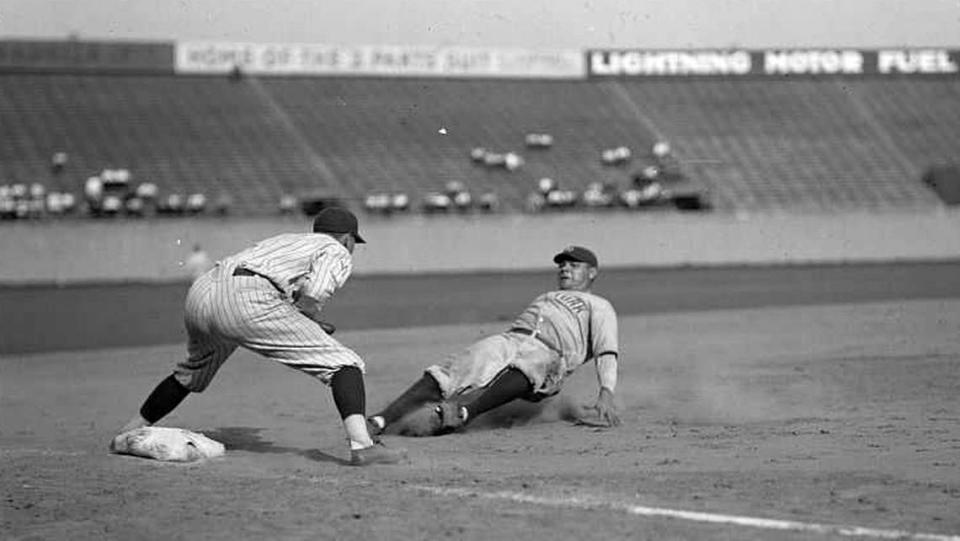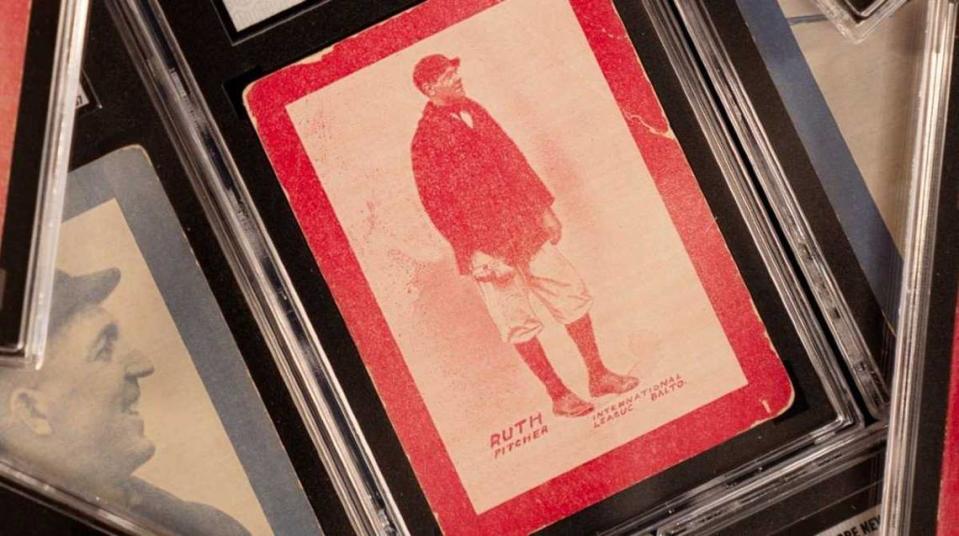‘This is a real baseball town’: Babe Ruth on Sacramento in 1927 after barnstorming tour
- Oops!Something went wrong.Please try again later.
- Oops!Something went wrong.Please try again later.
In the Spotlight is a Sacramento Bee series that digs into the high-profile local issues that readers care most about. Story idea? Email metro@sacbee.com.
Major League Baseball is coming to Sacramento, but it isn’t the first time big-league players will have stopped by the region, smashed home runs, dined at local eateries and signed autographs.
The Oakland A’s will play at Sutter Health Park, home of the Triple-A Sacramento River Cats, for three seasons starting in 2025, finally giving the state capital a big-league baseball feel.
It’s been a long time coming.
The A’s were a target by Sacramento investors, headed by Gregg Lukenbill, the man who purchased and brought the Sacramento Kings here in 1985. His MLB drive included ambition and poured concrete by the old Arco Arena site in the late 1980s before the project stalled out.
A century ago, Babe Ruth dazzled sellout crowds locally. Still on everyone’s shortest list of all-time players, Ruth first arrived in Sacramento in 1919 when he was about the biggest name in the sport to play an exhibition game at Buffalo Park, located at Riverside Boulevard and Y Street (now Broadway).
Weeks before the Boston Red Sox traded him to the New York Yankees, Ruth wowed an overflow crowd of 5,500, including fans who crowded on a levee that used to run behind the ballpark along Y Street, with his pregame batting-practice moon shots. In a 1992 Sacramento Bee story, a retired investment broker named Ed Cain recalled the night’s highlight: “(Ruth) poked the bat to the fencing, predicting a home run, and folks around me said, ‘If he does that, he’s a whiz.’”
He was a whiz. Ruth homered off Walter “Dutch” Reuther of the Cincinnati Reds.
Ruth returned to Sacramento for a barnstorming tour of exhibition games in 1927 alongside famed Yankees teammate Lou Gehrig under the heading of “The Bustin’ Babes and Larrupin’ Lous.” The future Hall of Famers anchored their rosters and played against each other.

The event was created by Christy Walsh, Ruth’s business manager and a former sports cartoonist who never stopped drawing up grand ideas. He set up a series of games headlined by Ruth and Gehrig and supported by local amateur players and minor league players to spread the word on this growing sport, especially in California, which had no Major League teams, and to raise money for charity.
And to make money, of course.
The tour started two days after the Yankees’ 1927 World Series romp of the Pittsburgh Pirates with what still is considered one of the sport’s greatest teams. Ruth crushed a record 60 home runs that season, skyrocketing his legend and fame, and Gehrig had 47.
The tour started Oct. 10 in Rhode Island and had stops across the East Coast before heading west. On the weekend of Oct. 22-23, the Babes and Lous played three games in the Bay Area in front of sellout crowds at Recreation Park in San Francisco and the Oakland Oaks’ field in Emeryville. Newspaper accounts described the tour as the most exciting thing that year outside Charles Lindbergh’s ground-breaking aviation efforts when he became the first person to fly solo across the Atlantic in his famed Spirit of St. Louis.
Ruth told the San Francisco Examiner at the time that hitting home runs included eyes-closed instincts. Not always eyes opened.
“A lot of times I never see the ball,” Ruth said that week. “That’s right: Look at me funny, but I tell you, lots of times when I sense the ball is coming in a certain place, I just close my eyes and swing.”
The tour moved to the Central Valley for a three-game stretch, including a night game in Stockton and a morning contest in Marysville. Fans watched the Marysville game from cars parked along the outfield perimeter. It was deemed such a special event that local schools were closed to allow children the chance to catch some baseball.
Trailing by two runs in the eighth inning with the bases loaded, Ruth smashed a three-run homer over the center-field fence — his second blast of the game to match Gehrig’s two blasts. The Babes won.

The tour then rushed to Sacramento for a 3 p.m. game that was sponsored by the Knights of Columbus with proceeds to go to the Stanford Home orphanage. The deal nearly collapsed weeks earlier when Ruth demanded $2,500 for the Sacramento appearance, later renegotiated to $1,500 with a percentage of ticket sales.
Ruth returned to the former Buffalo Park site, since renamed Moreing Field (it changed again to Edmonds Field in 1945). Tickets sold for $1.25 for reserved seats and 75 cents for general admission. The fences were 20 feet high and 325 feet down the left- and right-field foul lines. The Bee reported in previewing the event: “A home run over any fence at Moreing Field is a real drive, and the ball has to punch with a terrific clout to propel it over the barrier.”
Ruth and Gehrig provided terrific clout in pregame batting practice, combining for six bombs. In the fourth inning of a 5-5 game, Gehrig delivered a three-run shot over the right-field fence in a 10-7 win in front of nearly 10,000 fans. Before leaving the park, Ruth told the crowd, “This is a real baseball town.”
The tour finished with stops in San Jose, Santa Barbara, San Diego and Los Angeles. The event included 20 games in three weeks, spanning nine states and drawing more than 220,000 fans.
Ruth earned $70,000, which equates to about $1.2 million today, and Gehrig netted $45,000. Ruth hit 21 home runs on the tour and Gehrig had 13, though Gehrig batted .618 to Ruth’s .616. The stars signed more than 5,000 baseballs that were to be handed to fans, though a lot of them were lost along the way.
But not the history. That remains.

